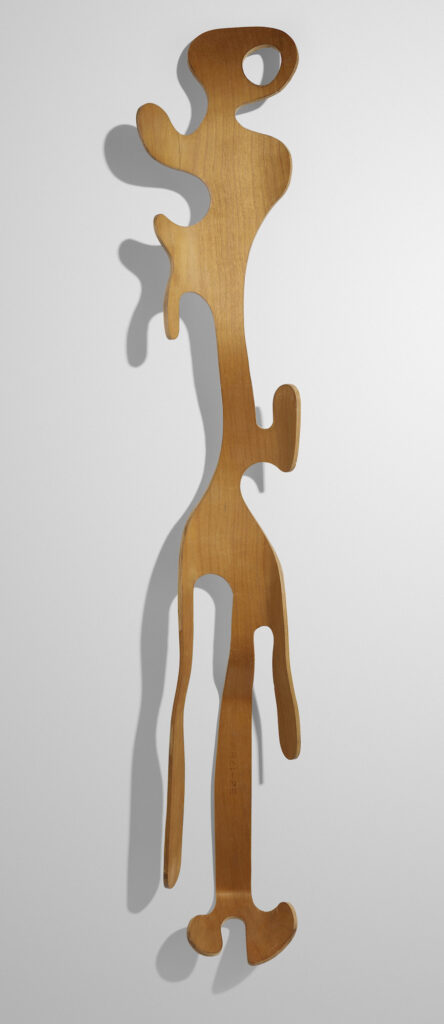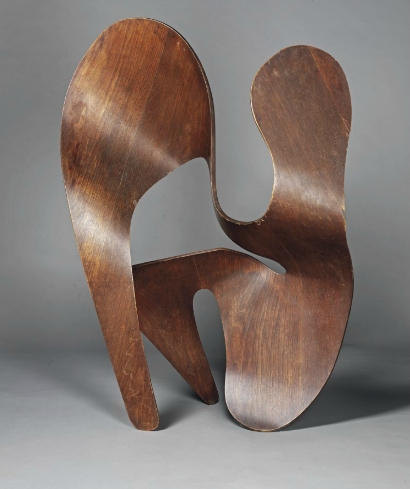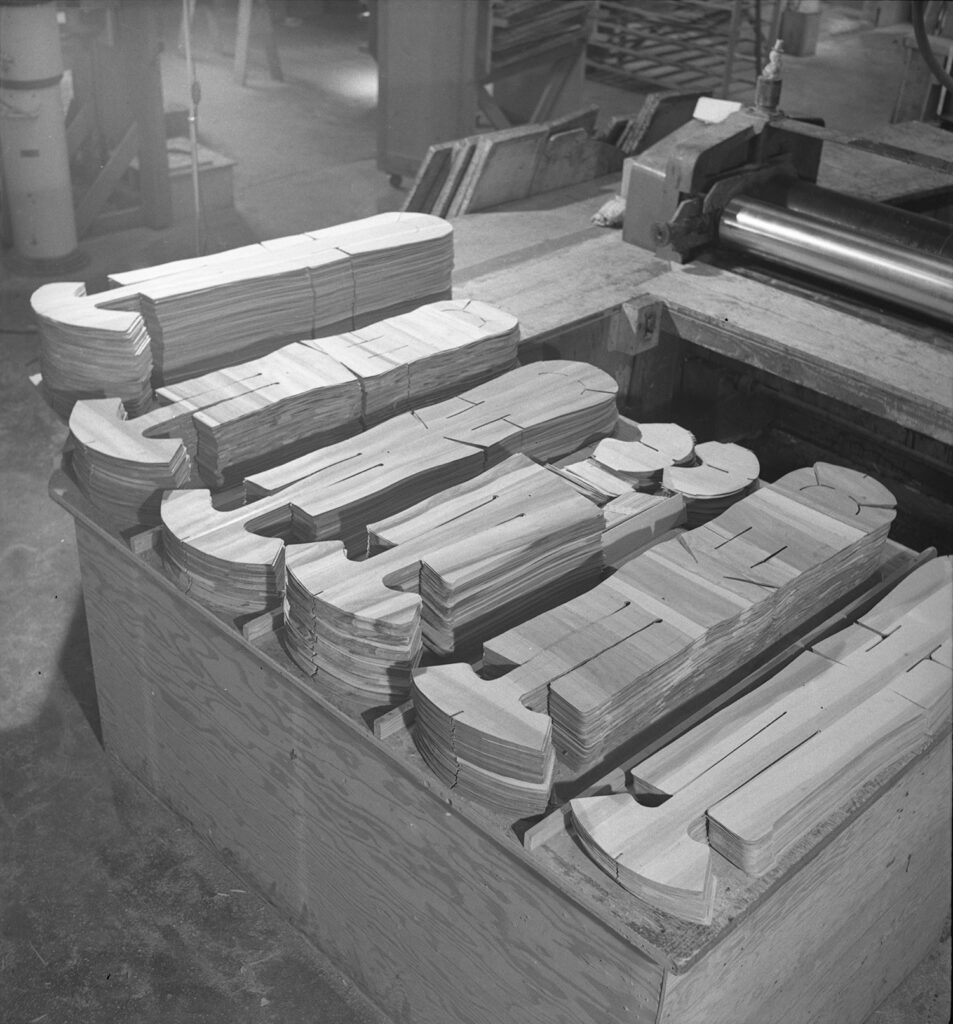
No, there is another. Eleven years ago, I wrote about reconsidering the Eames Studio, and especially Ray Eames, as artists.

The pair–it was credited to both Ray & Charles Eames, but then, back then, everything was, and Ray was probably told to feel lucky she was mentioned at all–the pair showed an amazing abstract sculpture of molded plywood– in a design exhibition at MoMA in 1944. It went home with exhibition curator/designer Serge Chermayeff.
During this crucial WWII period when the Eameses were exploring the artistic and practical aspects of molding plywood, they got a contract to make leg splints for the US Navy. As the Eames Institute put it in an online exhibition, “Plywood During The War,”
During this time, Ray and Charles further solidified an ethos that would guide their work for decades to come: removing, to the greatest extent possible, any marks of artistic self-expression in an effort to eliminate idiosyncrasies that get magnified in mass production, and distract from the purpose of the design. There is, in hindsight, some irony to this: the pair created what any impartial observer would deem sculptures in an effort to better understand and push the limits of their molding capability (as well as three known examples of sculptures carved from splints themselves).

These known splint sculptures were reviewed in 2012 on Esoteric Survey. The story that went around then was that Ray had made the splint sculptures. One broke in 1963 during the production of a promotional film, and after Ray and Eames Studio employee Parke Meeks repaired it, she painted it black. And later gave it to Meeks. Eliot Noyes had one, too, and his was also painted black. It was on the wall of his New Canaan house as late as 1963 [above]. Lucia Eames Demetrios had the third, and I don’t know what color hers is.
And now there is another. Wright20 is selling a Ray Eames splint sculpture that belonged to longtime Eames Studio employee Robert Staples, who, as the story goes, was around for the crash, damage, and repair of Meeks’ splint sculpture, and asked Ray if he could have one, too. “Ray obliged, drawing in pencil where Staples himself would make the cuts. Unlike the other known Eames splint sculptures, this example was never painted, and Ray Eames’s original pencil outlines are preserved and visible.”

So apparently there were still unmolded splint blanks lying around the Eames Studio 20 years later? The Eames Institute’s images of the splint production process showed the idiosyncrasies of mass production from which Ray had to draw her marks of self-expression. It feels clear that the early three splint sculptures’ totemic insect-like form emerged from the cut-but-unmolded blanks the Eames Institute showed above. But Staples’ sculpture doesn’t map so clearly for me; maybe it was made from an uncut blank?
Anyway, it’s interesting that Ray drew the sculpture onto the wood, presumably responding as much to the piece of wood in front of her as much as to the older splint sculpture she was dealing with at the time. How’d it go from 2-D to 3-D, then? Did she have instructions for molding it? Did the studio keep the splint jig for the Kazam! molding machine, too? Or was this splint sculpture molded freehand? I would like to see it.
[update: sold for $275,000, nice work, everybody.]
Oct. 27, 2022 | Lot 129 Ray Eames, Unique (sic) and Important Splint Sculpture, est. $50-70,000 [wright20]
Ray Eames / Splint Sculpture [esoteric survey]
Collection Exhibition 02: Plywood During The War [eames institute]
Modern Love [humanities/neh.gov]
Previously, related:
Ray & Charles Eames Sculpture (2012)
Considering the Eameses as Artists (2011)
